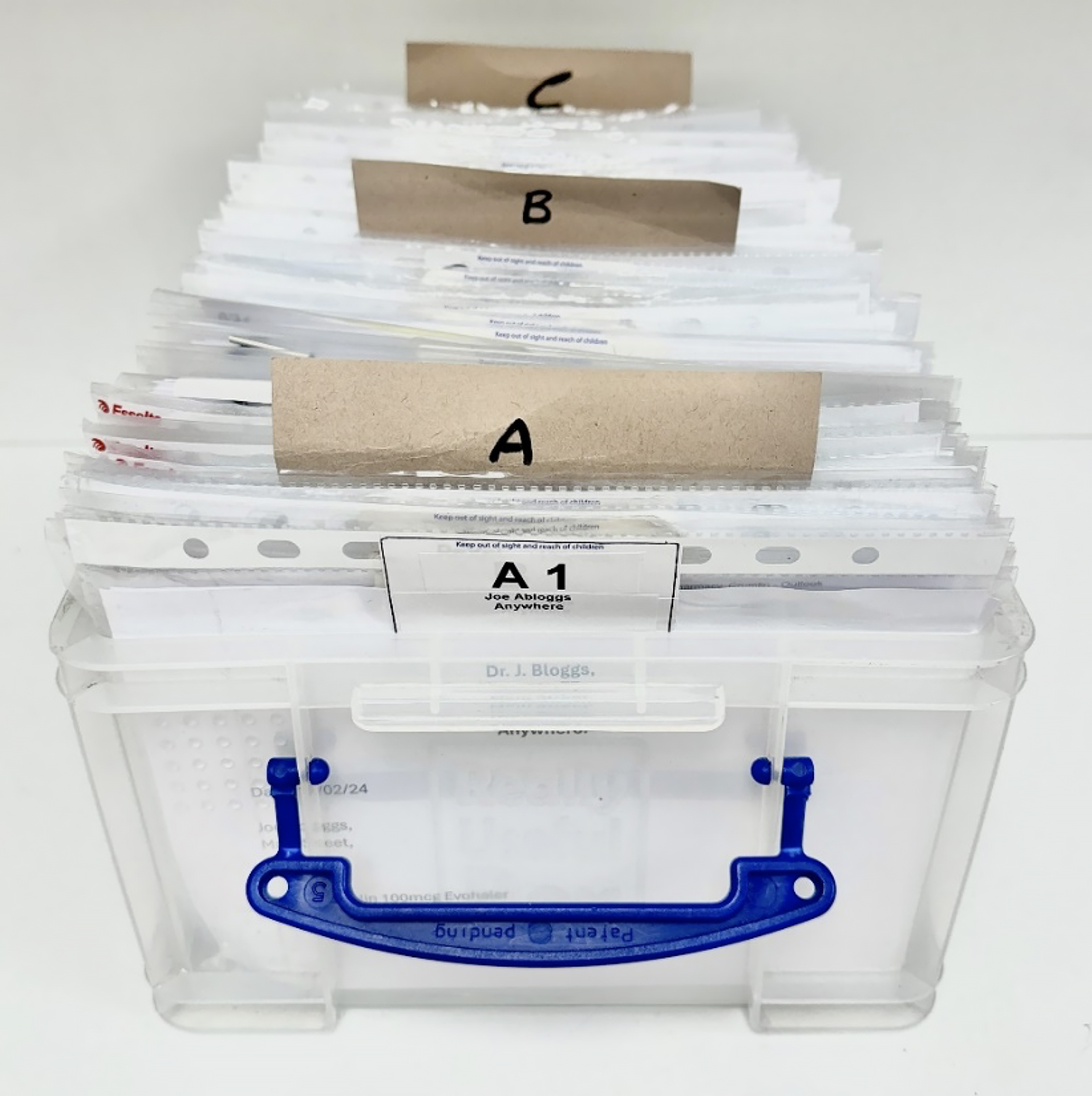Home » Alphanumeric filing system for prescriptions in a pharmacy
The IPU Pharmacy Practice Working Group (PPWG) is a group of community pharmacists, pharmacy technicians and IPU staff with an interest in improving pharmacy. In this article Ciaran Mulligan, community pharmacist and member of the PPWG, highlights the advantages of a alphanumerical filing system for prescriptions in pharmacy.

Regulation 12 of the Regulation of Retail Pharmacy Businesses Regulations 2008 (as amended), details the records to be kept in respect of medicinal products when conducting a retail pharmacy business. The PSI issued the document, Guidelines on the Keeping of Records in Respect of Medicinal Products when Conducting a Retail Pharmacy Business, to facilitate compliance with this regulation. In it they stated that, “a system should be in place to enable the timely and efficient retrieval of records”. An effective method to achieve this, in the management of prescriptions in a pharmacy, is through the use of an alphanumeric filing system for prescriptions.
An alphanumeric filing system is a method of organising documents based on a combination of letters and numbers. It’s a balance of the straightforwardness of alphabetical systems and the specificity of numerical systems. In the context of a pharmacy, this would mean arranging prescriptions based on the first letter of the patient’s last name and a unique numerical identifier.
Efficiency: An alphanumeric system allows for quick and easy retrieval of prescriptions. Pharmacists can locate a prescription by simply referring to the patient’s name and unique identifier, reducing the time spent searching through files and thus freeing up staff time and reducing wait times for patients.
Improved patient service: Faster retrieval of files means pharmacists have more time to consult with patients, leading to better patient care and satisfaction.
Error reduction: This system minimises errors in filing and retrieving prescriptions. Each prescription has a unique location based on the alphanumeric code, reducing the chances of misfiling or misplacing prescriptions. All scripts for a patient are stored together (paper scripts, printed Healthmail scripts, High Tech scripts, etc.), making it easy to see all of the patient’s current prescriptions together in one place.
Patient notes: Notes can be stuck on a patient’s prescription plastic pocket file which might be more visible than on PMR, for example, there is another patient with the same name/allergic to penicillin/patient prefers a certain brand.
Reduced confusion: By assigning numbers to names, it minimises the confusion that can arise from similar patient names.
Standardisation: Using a system similar to other pharmacies can make it easier for locum staff to get acquainted with your pharmacy if they are already familiar with the system.
Scalability: As the number of prescriptions increases, the alphanumeric system can easily accommodate growth. The system’s structure allows for the addition of new prescriptions without disrupting the existing order.
Time consuming: An alpha-numeric filing system can be time consuming to set up, but will more than pay back the time involved in setting it up.
Alpha-numeric code is on PMR: Access to the PMR is needed to find the alpha-numeric code for a patient before you can find their prescriptions on file. If there aren’t many dispensary computers or they are all in constant use, then it may lead to a time delay before the alpha-numeric code can be found on the PMR and the patient’s prescriptions on file are accessed.
Step 1: Assigning Codes
Each patient’s prescription file is assigned a unique alphanumeric code which is placed on the A5 plastic pocket containing all the scripts for that patient. This would be a combination of the patient’s last name and a unique number, for example, Ann Allen could be A1, John Allen A2, Joe Bloggs B1, John Doe D1, etc. This code is also entered in the patient’s file on the PMR (either in the dedicated field on the PMR, which is labelled as ‘Storage’ or ‘Patient reference’, or ‘Patient Filing Index’, depending on your dispensary software), or at the end of their surname in the patient’s surname field.
Step 2: Filing
Prescriptions are filed in order based on their assigned codes, so A1, A2, A3, . . . then B1, B2, etc.)
Step 3: Retrieval
When a prescription file for a particular patient needs to be retrieved, the pharmacy staff refers to the alphanumeric code contained in the patient’s file on the PMR. This allows for quick and accurate retrieval of the required prescription.

Storage box: I used a really useful nine litre plastic storage box (255mm wide x 395mm deep x 155mm high), available from most stationary suppliers for about €10. It can store approximately 400 A5 plastic pocket prescription files.

A5 plastic pockets: I used Rexel A5 high-capacity clear glass plastic pockets (code 1300063), which are also available from many stationary suppliers for about €40 for a pack of 100 pockets. Other A5 plastic pockets are available, but I settled on these because they have a higher capacity than other pockets and can store up to 25 sheets of A4 paper.
Ciaran Mulligan

Community pharmacist and member of the PPWG
Highlighted Articles